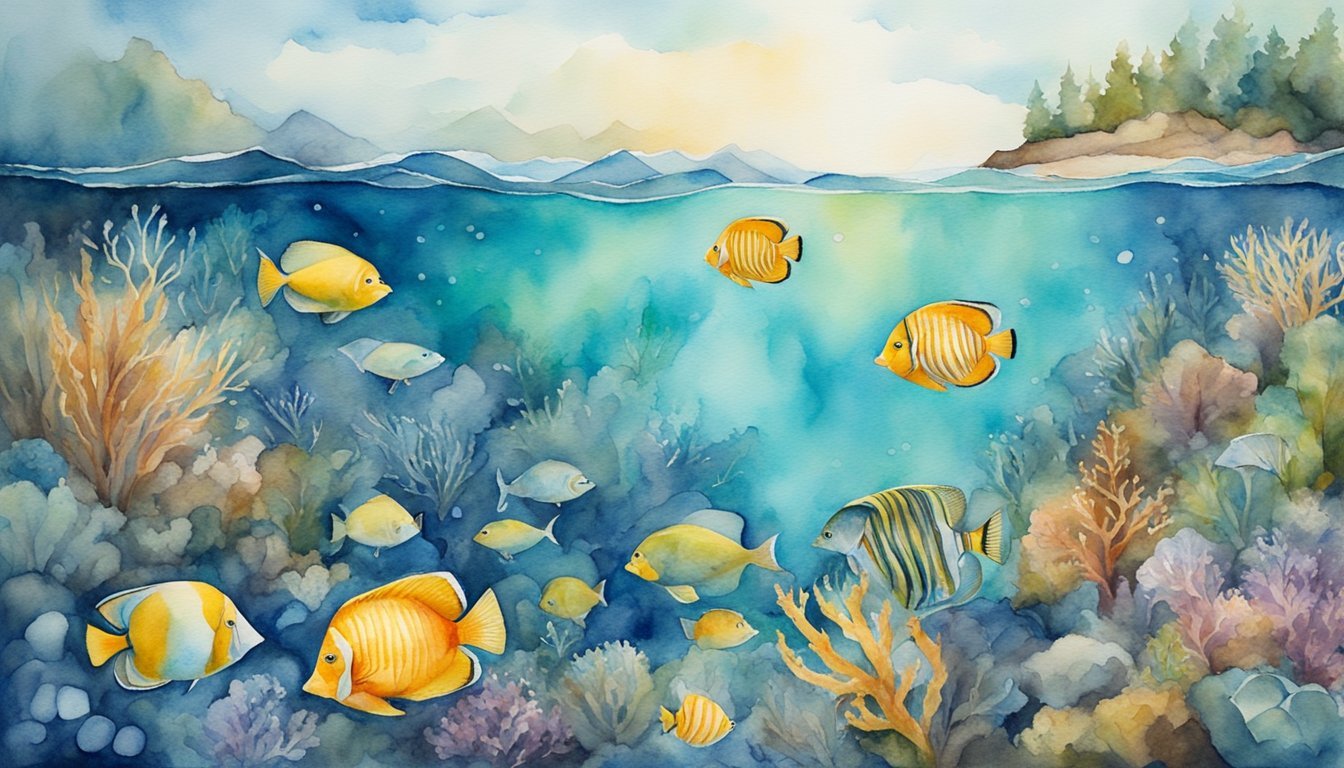Geography and Size
Comparative Ocean Size
The Atlantic Ocean is the second-largest of the world’s five oceans, covering approximately 17% of Earth’s surface and about 24% of its water surface area. It is, however, smaller than the Pacific Ocean, which is the largest ocean covering more than 41 million square miles.
Key Geographical Features
One of the most notable features of the Atlantic Ocean is the Mid-Atlantic Ridge, a massive underwater mountain range that runs from the Arctic to the southern tip of Africa. This ridge plays a crucial role in the seafloor spreading and the formation of new ocean crust.
Islands are also scattered throughout the Atlantic, and notable ones include Iceland, Bermuda, and the Azores. Some of these islands, like Greenland and Newfoundland, have coastlines that border the Arctic Ocean in the north.
In terms of its vertical structure, the Atlantic Ocean is divided into three zones based on depth and light level, which significantly influences the variety of marine life in each zone, as mentioned in the CIA World Factbook.
Notable Borders and Adjacent Seas
The Atlantic Ocean covers a vast area and has numerous important borders and adjacent seas. To the east, it is bordered by Africa, Europe, and the Mediterranean Sea, while the west is home to North and South America. Its coastline is punctuated by numerous bays, gulfs, and diverse bodies of water.
The north-facing border of the Atlantic includes the Arctic Ocean and smaller water bodies such as Baffin Bay, Davis Strait, Denmark Strait, and the Labrador Sea. These waters create the North Atlantic region, which encompasses the North Sea and the Norwegian Sea.
To the south, the Atlantic Ocean meets the Southern Ocean at the Drake Passage, while bordering seas include the Caribbean Sea, Gulf of Mexico, and the Scotia Sea. The ocean also has several significant waterways connecting it to other oceans and seas, such as the Strait of Gibraltar, which links it to the Mediterranean Sea.
Overall, the Atlantic Ocean has a diverse and vast geography that makes it an essential part of our planet’s ecosystem, ranging from the cold Arctic waters to the warm, tropical regions in the south.
Ecology and Resources

Diverse Marine Life
The Atlantic Ocean is home to a vast array of marine life, ranging from tiny plankton to massive whales. For example, some of the most iconic creatures of the Atlantic are dolphins and various species of seals and sea lions. The Gulf Stream, a powerful ocean current, plays a crucial role in sustaining this biodiversity by transporting warm water and nutrients throughout the Atlantic.
Intertwined with the Gulf Stream’s geography, the Atlantic also bears witness to volcanic regions near Iceland and layers of the Antarctic. These elements sculpt the ocean’s landscape, generating underwater mountains and valleys, in which diverse species can thrive.
Natural Resources and Human Usage
Spanning almost 85,133,000 square kilometers or 32,870,000 square miles, the Atlantic Ocean encompasses approximately 17% of Earth’s surface. Its vastness has led to the discovery of several natural resources critical to human activities.
Fishing, for instance, is a vital element of economic growth for many Atlantic countries, including Spain. Well-maintained fisheries and ports along the Atlantic Ocean support diverse fish species and contribute to food security around the globe.
Oil and natural gas are other major Atlantic resources, alongside valuable minerals such as gravel, precious stones, polymetallic nodules, and placer deposits. The Atlantic’s complex underwater geography, replete with seamounts and abyssal plains, plays a role in shaping these mineral deposits.
Environmental Concerns and Protection
The Atlantic Ocean is not immune to environmental challenges, typical of which are pollution, climate change, and overfishing. For instance, ocean currents spread plastic pollution, while weather patterns, such as hurricanes and tropical cyclones, leave behind further destruction. To address these concerns, the International Hydrographic Organization and other global institutions commit to implementing regulations and protection measures.
In a bid to combat pollution and safeguard ocean health, gyres and upwelling systems have been established. The Atlantic is also divided into subregions, including the South Atlantic Ocean, each regulated by distinctive climatic conditions and ecosystems. Collectively, these efforts help protect the Atlantic and support the marvelous biodiversity within.

